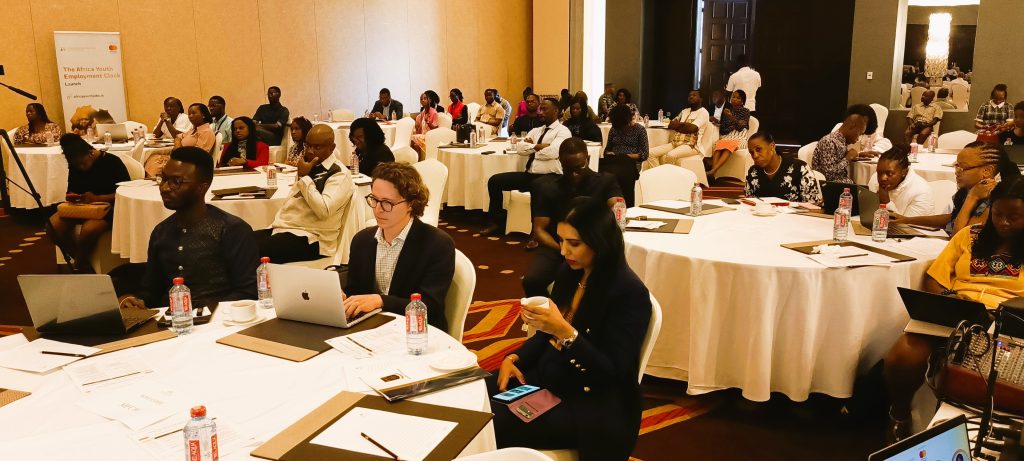By Paul Eduarko Richardson
Accra, June 13, GNA – The Mastercard Foundation and the World Data Lab have launched the Africa Youth Employment Clock, a digital tool that monitors real-time job growth and forecasts employment trends in Africa up to 2030.
Launched in Accra, the Clock is intended to democratise data and inform the strategic decision-making of policymakers, development actors, youths, and other stakeholders interested in promoting inclusive labour markets.
A user-friendly and publicly available tool with cutting-edge data modelling and visualisation, the Clock draws from surveys and datasets made available by national statistics offices, the International Labour Organization (ILO), and the International Institute for Applied Systems Analysis (IIASA).
Accessible online at africayouthjobs.io, the Clock has country-level youth employment data on all 54 African states, as well as sub-national data for Ghana, Rwanda and Kenya.
Access to sub-national data would be expanded, over time, to cover other parts of Africa, particularly countries where the Mastercard Foundation operates.
Speaking at the launch, Ms Rica Rwigamba, Country Director, Mastercard Foundation, Ghana, said the Clock aligned with the Foundation’s mission of enabling 30 million young Africans to access dignified and fulfilling work by 2030.
According to the World Data Lab projections, Africa would experience its highest-ever youth population growth by over 130 million in the decade of 2021 to 2030.
“As we witness unparalleled growth in the continent’s youth population this decade, we recognise young women and men of Africa as the dynamic workforce and leaders capable of solving local and global problems.
“This tool will be vital in delivering precise labour market insights to support youth empowerment efforts and refining our focus on programmes for those most in need,” Ms Rwigamba said.
Dr Reshma Sheoraj, Vice President, Strategic Engagements, World Data Lab, indicated that, in 2023, two out of ten youths worldwide were African.
She said by 2030, Africa would have quarter of the global youth population, adding that, in 2100, four out of ten youth worldwide would be an African.
She noted that all regions of Africa had significantly higher youth growth rates, with six countries alone accounting for more than 50 per cent of all youth population added from 2023-2030.
Mr Kwadwo Agyapon-Ntra, Data Scientist, World Data Lab, noted that, Ghana’s youth population was growing fast, and the share of youth not in employment, education or training (NEET) was projected to grow in a “business-as-usual scenario”.
Professor Nana Aba Appiah Amfo, Vice-Chancellor, University of Ghana, said the Clock would help address the challenge of youth unemployment which had persistently plagued the African continent.
She added that the novel tool would contribute to meeting the United Nations Sustainable Development Goals (SDG 8) which emphasised decent work and economic growth.
That, she noted, would have direct bearing on SDG 1 No poverty, SDG 2 Zero hunger, SDG 3 Good health and wellbeing, and SDG 4 Quality education.

She added that, economic development and poverty eradication under Agenda 2063 which was “The Africa We Want”, as well as Ghana’s “Vision 2057” launched by the National Development Planning Commission, would all be accelerated through the Africa Youth Employment Clock.
“It is evident that all these beautiful aspirations will remain mere blueprints if they are not actioned, monitored and evaluated. This certainly calls for data-driven decision making and actions,” Prof Amfo stressed.
GNA